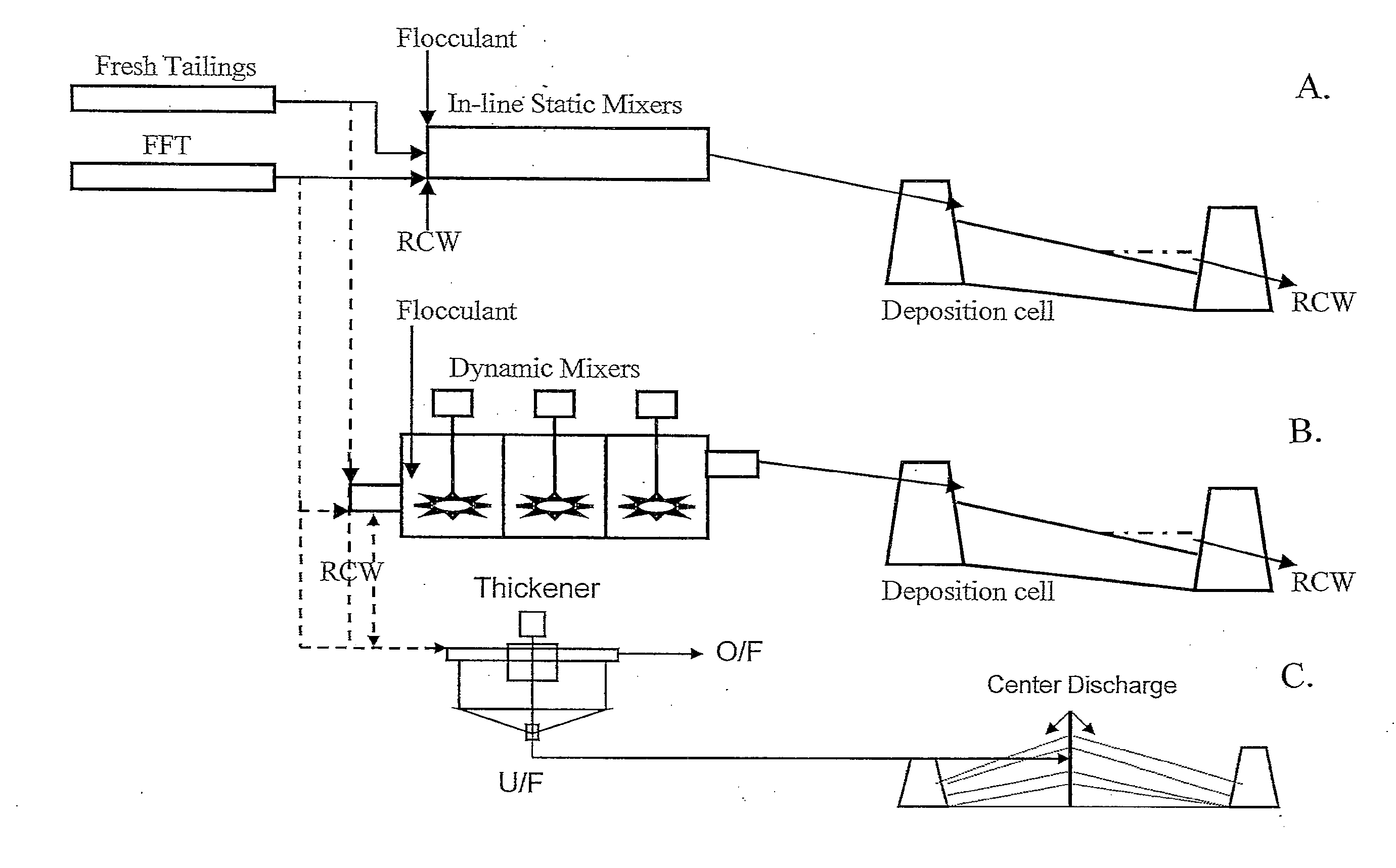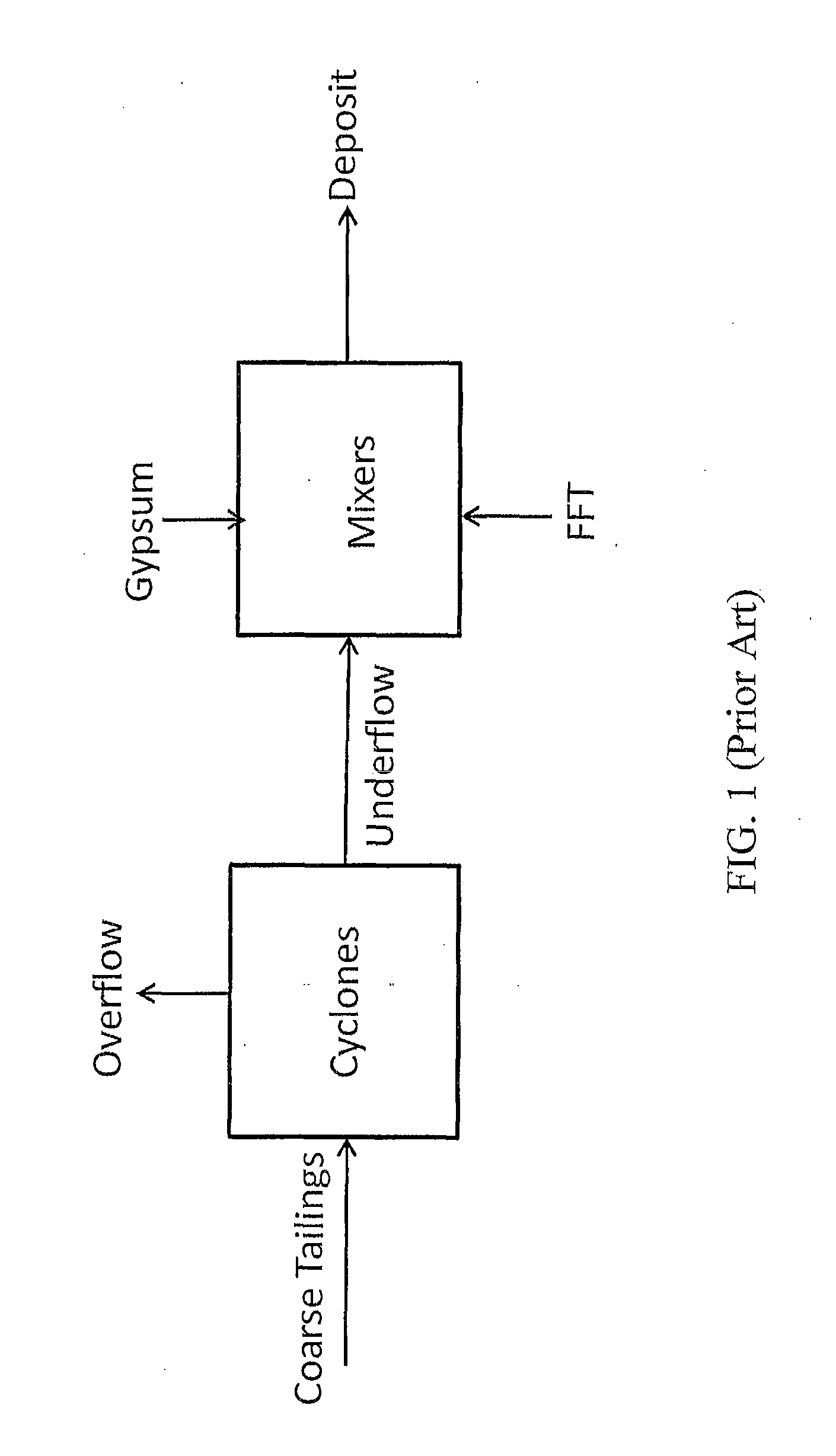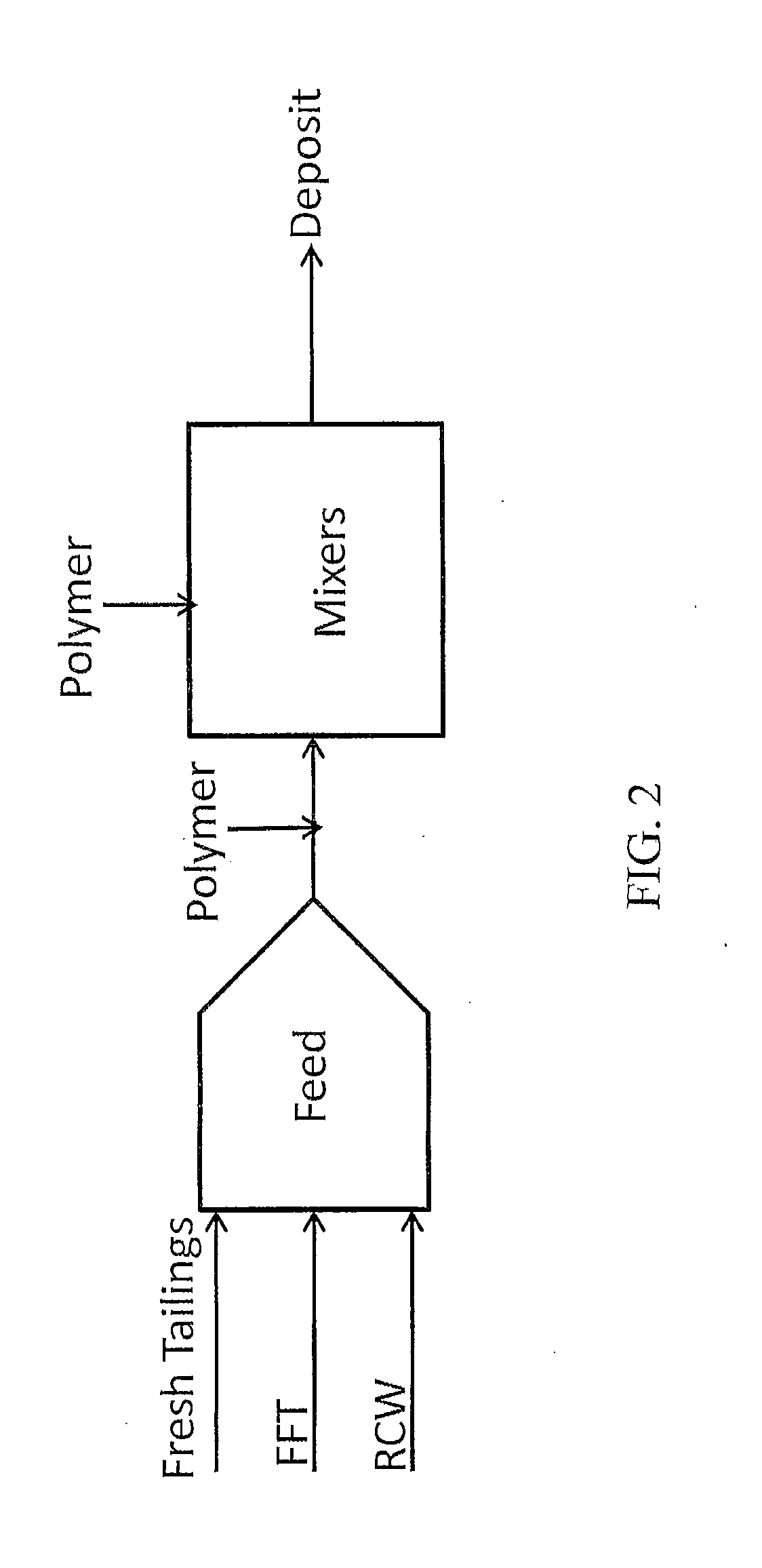Co-processing of fluid fine tailings and fresh oil sands tailings
a technology of fluid fine tailings and oil sands, which is applied in water treatment parameter control, separation processes, and sludge water treatment from quaries, etc. it can solve the problems of limiting the options for reclaiming tailings ponds, limiting ct production, and fines that are not readily separated from coarser sands, etc., to achieve the effect of strengthening the permeability and the strength of the deposi
- Summary
- Abstract
- Description
- Claims
- Application Information
AI Technical Summary
Benefits of technology
Problems solved by technology
Method used
Image
Examples
example 1
[0042]In this example, a 2-L mixing tank was used for flocculation tests. The tank had a height of 22 cm, with a diameter of 12 cm. A mixer having two 7.5 cm diameter Flat Blades Turbine (FBT, 6 blades) impellers was used to mix the FFT and fresh tailings at a speed of about 300 rpm. Fresh tailings used had a solids content ranging between about 49.5 to about 53.5 wt %, with a SFR ranging from about 4.6 to about 8.5. The FFT used was MFT obtained from tailings ponds, having a solids content ranging from about 36.4 to about 38.6 wt % and a SFR of about 0.01 to about 0.06. Eight different polymers were tested at two polymer dosages of 200 and 250 g / tonne solids. Flocculant solution was injected within a period of 30 seconds via tubing fixed inside the mixing tank and simultaneously mixed with the fresh tailings / MFT slurry.
[0043]After flocculation, the flocculated samples were poured out of the mixing tank into a 2-L graduated cylinder for settling testing. The initial settling rate (I...
example 2
[0052]FIG. 14 is a ternary diagram which shows a comparison of properties, % water by weight, % fines in solids by weight, and % solids by weight, of different tailings slurry.
[0053]The line directly below the box labeled CT Segregation represents CT (Composite Tailings) −44 um fines segregation boundary line. CT would segregate above this line and would not segregate below this line. The liquid and solid boundary line (the line between the boxes labeled Liquid and Solids) is based on the plastic limits of soils. Here, “liquid” refers to soft tailings while “solid” means semi-solid and solid in nature of soils when the material's density is higher than its plastic limit. The line between the boxes labeled Fines matrix and Sand matrix is the sand and fines matrix boundary line. F / (F+W) is defined as Fines / (Fines+Water) %.
[0054]From the ternary diagram, it is clear that the operation envelope of feed density and fines content (i.e., SFR) for co-treatment of FFT and Fresh Tailings by a...
PUM
| Property | Measurement | Unit |
|---|---|---|
| wt % solids | aaaaa | aaaaa |
| particle diameter | aaaaa | aaaaa |
| shear strength | aaaaa | aaaaa |
Abstract
Description
Claims
Application Information
 Login to View More
Login to View More - R&D
- Intellectual Property
- Life Sciences
- Materials
- Tech Scout
- Unparalleled Data Quality
- Higher Quality Content
- 60% Fewer Hallucinations
Browse by: Latest US Patents, China's latest patents, Technical Efficacy Thesaurus, Application Domain, Technology Topic, Popular Technical Reports.
© 2025 PatSnap. All rights reserved.Legal|Privacy policy|Modern Slavery Act Transparency Statement|Sitemap|About US| Contact US: help@patsnap.com



